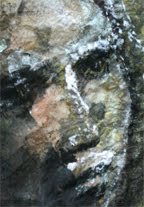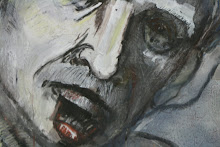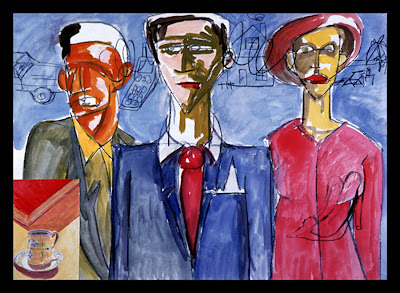
Wednesday, October 10, 2007
Sunday, October 7, 2007
Images from Beirut
After Cairo, I moved to Beirut, and this environment had a significant impact on my use of color and subject matter. Lebanon is a stunning country with beaches, mountains, cities, villages, and ancient sites. All of this is packed into a tiny country (compared to Canada, my home), and the variety does not stop with the geography. The people in Lebanon are highly diverse and regional as well. My greatest challenge was to find some commonality, what ran through all of this tying the people and place together, if anything. I began a series of color studies, taking for influences the intensely various qualities of sunlight and how it changed the colors of the natural and urban environments. As opposed to Cairo, my palette expanded into a much wider range. After a time, I began to notice something with the people. There seemed to be a tremendous sense of waiting, as if the answers were just around the corner. Political malaise, international interference, economic instability, and sectarian differences would all be worked out, perhaps tomorrow but soon. I felt a sense of unrealized potential that had little outlet within society, and along with this sense of waiting, I noticed the great love of diversion in many forms. Outdoor activities, comparing styles, looking each other over, up, and down, mobile phones, comparing ailments and medications, and an active nightlife were all participated in to divert attention from the boredom of waiting. This was the complexity I was after with my work. I still don't feel as if I have got it just yet and much of the works are still being sifted through and altered.
Thursday, October 4, 2007
Images from Cairo
My time in Cairo was highly significant in my development as an artist. I had left Canada and my formalist roots behind with the purpose of developing a body of work that would reflect a new a very different culture. In Cairo, I began a series of drawings, but I was unsatisfied after six months. The main reason was the work was only on the surface, and Cairo had begun to open up to me. Three things kept coming up in my mind. One, Cairo was the recycling capital of the world. Each neighborhood has a Ruba Bikya man, who rolls his cart though the area calling out "Ruba Bikya" or just "Bikya", which comes from Italian for "Old Clothes". He collects everything and anything that can be traded, fixed or re-used, which pointed to the process I used with these works. Second, even though Cairo is polluted and dirty, there are moments when the city glows with beautiful color and has a serene calmness. These times were rare, but greatly appreciated due to that rarity. From this I tried to capture the moment without losing the rawness. Third, the faces in the turbulence of the city kept sticking in my memory. There is a raw energy in the city that for a second will slow down to show you a scene or a cameo that has a poignancy showing humanity at its best, worst, and most real, then the moment is gone in the swirl. All of this was going through my mind as I recycled my works, collaging, drawing, and painting over top of the first body of work until I felt I had captured something of the essence of this complex and compelling city.
Sunday, September 16, 2007
Subscribe to:
Posts (Atom)





.gif)















